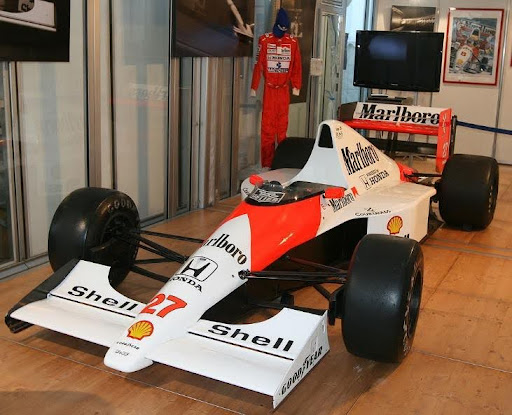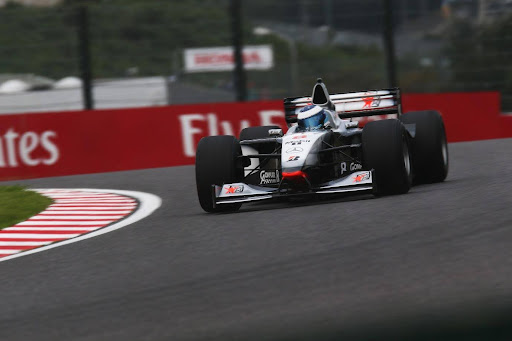McLaren is a supercar manufacturer that was simply born to face. The manufacturer was founded by the New Zealander Bruce McLaren in 1963 while competing in Formula 1. After years of success. the British racing team soon became the second most successive team and second oldest active team after Ferrari. Having won 183 races, 12 Drivers’ Championships and 8 Constructors’ Championships, let us discuss the eras of dominance for the Woking team.
1984-1985: The MP4/2 and MP4/2B
Initially, the MP4/2 was designed by John Barnard, Steve Nichols, and Gordon Kimball. Like most of its major competitors (other than the Williams FW09), the car used an all-carbon fibre chassis pioneered by the car’s designer John Barnard with its predecessor, the MP4/1. The car was powered by a 1.5 Litre, 90° V6 TAG-Porsche turbo engine that produced 650 bhp (485 kW; 659 PS) in race set-up and produced up to 800 bhp (597 kW; 811 PS) in qualifying set-up. The MP4/2 is exceptionally reliable with excellent race pace, compared to Brabhams’ blistering pace in qualifying and unreliable attributes. High reliability and quick race pace contributed it to being the season’s most successful race car, wrapping the Constructors title in Round 13, 3 rounds before the season ends.
In 1985, the MP4/2B which is an upgraded version of MP4/2 was developed with cleaner aerodynamics and the removal of winglets due to regulations. The engine had received upgrades from Porsche with an improved fuel efficiency and higher power output. The traits of high reliability and consistent race pace remained in the MP4/2B, sealing the driver’s title with 5 rounds to spare and constructors with 2 rounds to spare.
1988-1991: The legendary MP4/4 and its successors MP5 and MP6.
The 1988 to 1991 seasons were the highest point of McLaren’s success with its longest period of consistent domination in Formula One. The 1988 McLaren-Honda MP4/4 is one of the most dominant cars in the entire Formula 1 history even until now. Powered by Honda’s RA168E 1.5-litre V6-turbo engine and driven by teammates Alain Prost and Ayrton Senna, the design of the car was led by American engineer Steve Nichols and Gordon Murray. The MP4/4 won 15 out of 16 races in this season, having the second-highest win rate of 93.75% after the RB19 of 95.45%. The team has sealed the Constructors title 5 rounds before the end of the season, creating one of the most dominant eras in Formula One history; Scoring 199 points compared to 65 points of Ferrari in second place.
In 1989, its successor MP4/5 raced for the season. Compared to its predecessor the turbocharged V6 engine, the MP4/5 has a naturally aspirated 3.5 litres V10 engine. However, this did not stop McLaren from dominating the 1989 season, winning 10 races out of 16 and scoring 144 points which is almost double Williams’ 77 points in second place.
In 1990, the team developed the MP4/5B, which was different from its predecessors in that the front and rear wings were designed by Oatley and his team, with reprofiled the rear bodywork around larger radiators. It also featured a brand-new venturi tunnel on the underfloor of the car. This vehicle won 6 races in the season and scored 121 points in the Constructors.
The MP4/6 competed in the 1991 season, designed by McLaren’s Neil Oatley, Matthew Jeffreys, David North, David Neilson, Bob Bell, and Mike Gascoyne. The car is powered by a naturally aspirated V12 engine Honda RA121E. It achieved eight Grand Prix wins and ten pole positions throughout the whole season and scored 139 points, compared to its predecessors, the MP4/6 is less dominant with only 14 points ahead of Ferrari in second place.
1998: The Mclaren MP4/13
To finish off the list, we have the MP4/13, which competed in the 1998 season. The chassis was designed by Adrian Newey, Steve Nichols, Neil Oatley, and Henri Durand. The engine designed by Mario Illien, is powered by a naturally aspirated Mercedes V10 engine, winning 9 races out of 16 in the season and winning both the Constructors and Drivers Championship with Mika Häkkinen.



